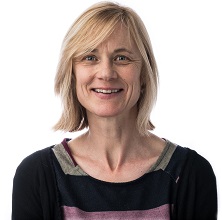
The past few weeks have been incredibly busy for me and the MAGPIEs (Modelling Advisory Group Public Involvement and Engagement).
In the middle of November I was invited to join a delegation from the UK to the Partnership in Clinical Trials (Europe) conference held in Vienna. The conference, which brings together academics, clinicicans and industry stakeholders involved in running clinical trials had as it’s focus “Patient Centrictity and Collaboration”. I was contributing to a full day’s workshop “Patient Centricity: Practical tips for involving the public in research design and delivery” exploring how we can bring learning from our experiences with public involvement in research to clinical trials where often ethical and legal barriers present unique challenges to those striving to accommodate patient’s needs and preferences in complex, long term trials.
The following week, and despite the stormy weather, the CBMA hosted three public involvement events.
For the first of these, we brought together 14 members of the public with a lived experience of epilepsy with mysefl, Jen Creaser (Research Fellow), Wes Woldman (Research Fellow) and Zoe Bright (PhD Student) for a half day workshop exploring priorities for epilepsy research. Ten key themes for research were identified by the participants, ranging from the need for specialist doctors to mental health support and increased education and awareness training. Although there were some differences in the themes identified by people with a diagnosis of epilepsy and those who care for family members with epilepsy, when it came to selecting which were most important for future research, both groups were broadly in agreement. Jen and I will be working with the local Epilepsy Action (Exeter) group to gauge a wider public view of their findings. They will also work with our researchers to discuss how these findings can help us better involve members of the public in our research. If you are interested in joining a group of people with a lived experience of epilepsy to support the work of the Centre please to find out more.
Our second event saw MAGPIES Ray, Olwen, Nigel and David providing our PhD students with an introduction to public involvement and engagement. This was also an opportunity for the PhD students to develop their skills in presenting complex research to a non-academic group. Zoe and Freddy held their own with an (almost completely understandable!) presentation about using mathematics to understand seizures in epilepsy and Rudy, Ammarah and Jordan contributed to the detailed, lively and sometimes challenging discussion that followed –including questions like “what makes a mathematical model a ‘model’?” (A topic for a future blog perhaps?!). The tables were then turned and, following my brief introduction about the origins of public involvement, Ray and Nigel presented personal accounts of why they got involved in biomedical research and why they believe involvement is so important. Ray encouraged us to consider “what is the public?”, drew parallels with investment in business – where timing of research is critical, and challenged us to consider avoidable waste in biomedical research when planning our research programme. Nigel prompted us to remember that the best “use-led” research needs three inputs: academic studies, clinical expertise AND an understanding of patient needs and preferences. He summarised this nicely with the phrase it’s not good enough to do ‘research right’, you need to do the ‘right research’”. We are looking forward to our next session with the students where we will encourage and support them to develop some public involvement in their PhD studies.
To round off a busy week, Olwen and Nigel (MAGPIES) held a lively discussion with researcher Joel Tabak (recipient of a CBMA Seedcorn Grant) about how to communicate his research. Joel’s research involves understanding the mechanisms that control the release of hormones deep in the cells of the brain’s pituitary gland. Olwen and Nigel were brilliant at helping Joel unpick the essential features of his research, develop an engaging story around it, and suggest ways in which this story could be conveyed via a web page.
And, just scraping into this super busy month for us, David and I travelled to Bristol to present at the National Engage conference. Their talk “Recreating the old to engage with the new” highlighted the Santorio project. One of only a very few members of the public to speak at the conference, David amazed the audience of over 40 people with a description of his journey from line drawing to historically accurate, fully working pulsilogium. We are currently evaluating the pulsilogium as a scientific instrument in partnership with local schools but the details of this will have to wait until our next blog…
So November proved to be a real example for why we at the CBMA are so committed to involving the public in our work. We have been challenged to answer the “so what?” questions, to explain terms and ideas we take for granted, and encouraged to ensure that not only are we doing “research right”, but that we are doing the “right research”.